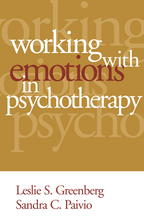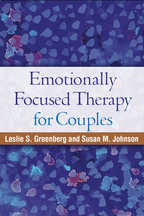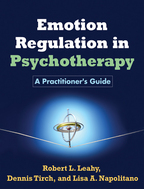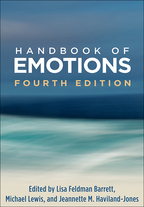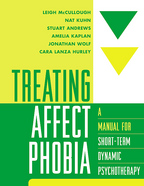Emotion in Psychotherapy
Leslie S. Greenberg and Jeremy D. Safran
Paperback
Paperback
orderFebruary 16, 1990
ISBN 9780898625226
Price: $55.00 338 Pages
Size: 6⅛" x 9¼"
Copyright Date: 1987
“A classic resource for both clinicians and researchers. ”

—Child and Family Behavior Therapy
“Emotion and Psychotherapy is profound and stimulating....Safran and Greenberg have put together one of the few books that, as a whole, is truly exciting. [and] consistently intriguing.”

—Contemporary Psychology
“A truly outstanding work....Without ignoring developments in behavioral and cognitive science, these Editors attempt to integrate data from emotion theory into the psychotherapeutic process in a way that inevitably portends the future of psychotherapy. Every researcher and practitioner involved with psychotherapy should read this book.”

—David H. Barlow, Ph.D.
“As Safran and Greenberg point out, the time is ripe for psychotherapy theorists and researchers from different theoretical traditions to begin dealing with the topics of emotion and affective change in a systematic fashion and to begin a dialogue with each other. In this very valuable book, they have accomplished these goals admirably. Each chapter, written by a leading figure in the field of psychotherapy research and theory, is of great interest in its own right. And the final integrative chapter...is itself worth the price of the book. Anyone interested in the role of emotion in therapeutic change—and I assume that would include just about everyone interested in psychotherapy—will find the book of great value.”

—Morris Eagle, Ph.D.
“Safran and Greenberg offer us a valuable service by bringing together examples of how emotionality emerges in various forms of psychotherapy. They then seek to point up linkages to current theories of differential emotions. Of special value are contributions...[that] suggest ways in which therapists from various orientations can integrate their practice with current scientific evidence.”

—Jerome L. Singer, Ph.D.
“Psychotherapists have long followed the red thread of emotionality, but a general and integrated theory of cognition, emotion, and psychodynamics has not been available. This compendium of views of how to explain clinical emotionality moves toward the goal of such integration by specifying observable phenomena and pegging the theories of contributors to such instances. The book is part of a revitalization movement in clinical theory.”

—Mardi Horowitz, M.D.
—Child and Family Behavior Therapy
“Emotion and Psychotherapy is profound and stimulating....Safran and Greenberg have put together one of the few books that, as a whole, is truly exciting. [and] consistently intriguing.”
—Contemporary Psychology
“A truly outstanding work....Without ignoring developments in behavioral and cognitive science, these Editors attempt to integrate data from emotion theory into the psychotherapeutic process in a way that inevitably portends the future of psychotherapy. Every researcher and practitioner involved with psychotherapy should read this book.”
—David H. Barlow, Ph.D.
“As Safran and Greenberg point out, the time is ripe for psychotherapy theorists and researchers from different theoretical traditions to begin dealing with the topics of emotion and affective change in a systematic fashion and to begin a dialogue with each other. In this very valuable book, they have accomplished these goals admirably. Each chapter, written by a leading figure in the field of psychotherapy research and theory, is of great interest in its own right. And the final integrative chapter...is itself worth the price of the book. Anyone interested in the role of emotion in therapeutic change—and I assume that would include just about everyone interested in psychotherapy—will find the book of great value.”
—Morris Eagle, Ph.D.
“Safran and Greenberg offer us a valuable service by bringing together examples of how emotionality emerges in various forms of psychotherapy. They then seek to point up linkages to current theories of differential emotions. Of special value are contributions...[that] suggest ways in which therapists from various orientations can integrate their practice with current scientific evidence.”
—Jerome L. Singer, Ph.D.
“Psychotherapists have long followed the red thread of emotionality, but a general and integrated theory of cognition, emotion, and psychodynamics has not been available. This compendium of views of how to explain clinical emotionality moves toward the goal of such integration by specifying observable phenomena and pegging the theories of contributors to such instances. The book is part of a revitalization movement in clinical theory.”
—Mardi Horowitz, M.D.

